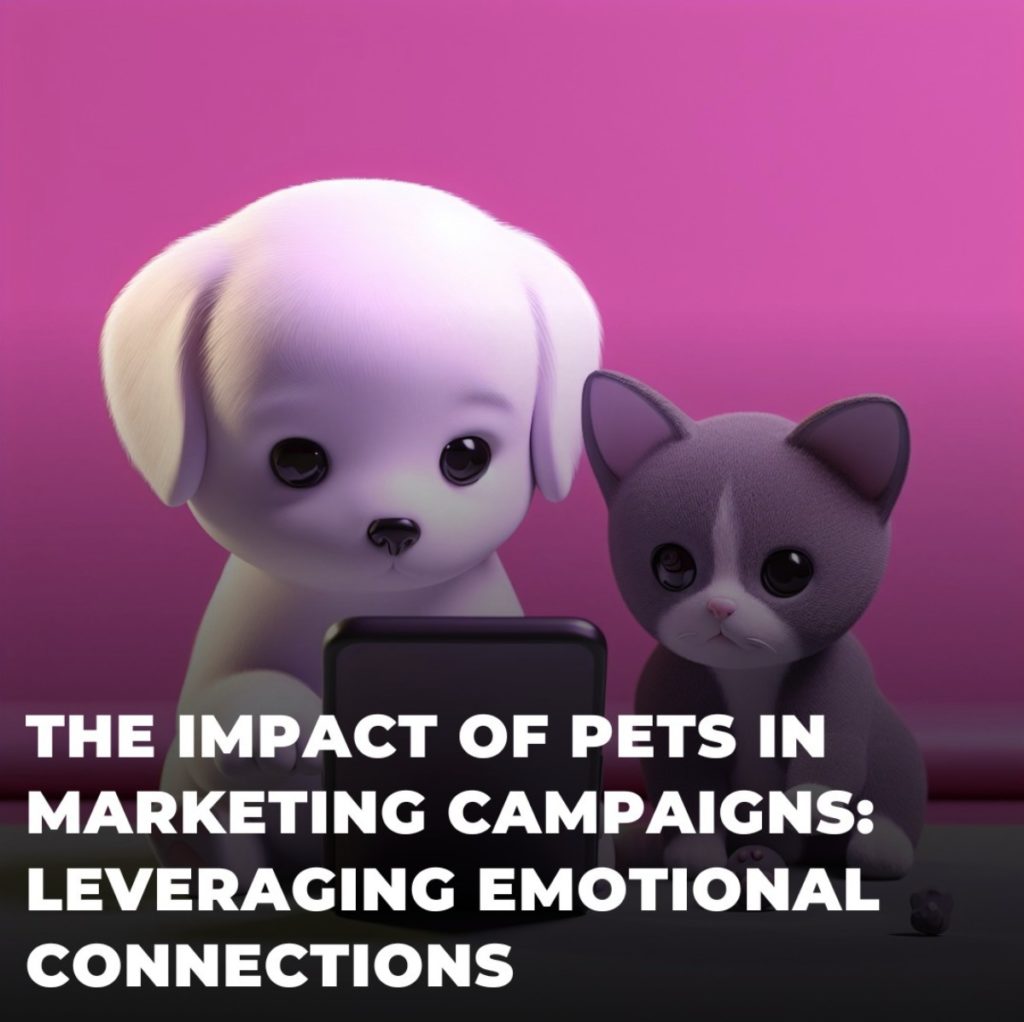In today’s world of marketing, pets have transcended their roles as mere furry companions and have evolved into powerful tools for establishing emotional connections with consumers. Whether it’s the typical cat/dog or more exotic like lizards and snakes, these beloved animals have proven to have a profound effect on brand affinity. The widespread appeal of the animal kingdom is evident in the millions of posts dedicated to pets on social media platforms like Instagram.
Research unequivocally demonstrates that incorporating pets into marketing campaigns can yield a substantial increase in engagement. For instance, on Instagram, brands have observed up to a staggering 295% surge in comments on content featuring pets. This emotional engagement is particularly valuable in today’s digital landscape, characterized by its incessant noise, where capturing and retaining the audience’s attention is a formidable challenge.
Pets have a unique ability to evoke strong emotions of love and happiness, fostering a sense of familiarity and connection with viewers. They allow consumers to see themselves in the situations portrayed, thereby nurturing relatability and humor. Moreover, pets, with their inherent cuteness, effortlessly capture the hearts of viewers.
The changing definition of families, marked by an increasing number of nuclear families and rising income levels, has led to nearly 7 in 10 Americans having a pet, with dogs and cats being the most popular companions. Pets provide an instant and emotionally resonant reaction, effectively serving as storytelling tools. They align seamlessly with the evolving cultural definition of a family, where pets are progressively becoming integral members.
Pets, in essence, are attention magnets and establish an immediate connection with consumer emotions. They elicit genuine emotions, offering an authentic way for brands to connect with their audience. A remarkable facet of pet marketing is the rise of “Petfluencers.” Many pets on social media have amassed more popularity than human influencers, with examples like Loki The Wolf Dog boasting nearly 2 million followers on Instagram. Incorporating pets into marketing campaigns can cultivate strong emotional connections with consumers, ultimately leading to increased engagement.
Pet-related content generates 2.5 times more engagement on social media than non-pet content. This heightened engagement is a result of pets’ universal appeal and their ability to elicit potent emotions such as joy, love, and nostalgia. Brands that tap into these emotions can forge deeper connections with their audience and cultivate lasting brand loyalty. To illustrate the power of pets in marketing, one need look no further than Subaru’s “Dog Tested. Dog Approved.” campaign, which astutely showcases the unbreakable bond between pets and their human counterparts.
In today’s era of dwindling attention spans, where brands strive to leave a lasting impression on consumers, pets offer a memorable and shareable advantage. Their inclusion in marketing campaigns effectively captures the audience’s attention in a cluttered digital space.
Furthermore, it’s worth noting that pets resonate particularly well with younger demographics, such as Gen Z and millennials. These audiences prioritize authenticity, relatability, and emotional resonance in advertising, making pets a perfect fit for modern marketing.
Ethical concerns loom large in the realm of pet marketing. It is imperative to acknowledge that the exploitation of animals for advertising can have lasting physical and mental effects on them. Consequently, more and more ad-makers are opting for alternatives like animated or computer-generated animals.
The impact of pets in marketing campaigns is undeniably substantial. They have the capacity to evoke powerful emotions, boost engagement, and establish enduring brand connections. However, this influence must be wielded responsibly and ethically, with due consideration for the welfare of these beloved animals. In a world where consumer attention is a coveted commodity, pets have emerged as invaluable allies in capturing the hearts and minds of audiences.
